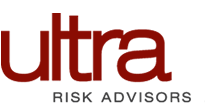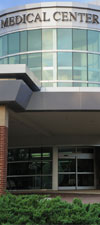What is Medical Imaging Risk Management? Risk management is defined as proactively preparing for the possibility of the danger of incurring loss or injury as a result of negligent or improper medical care. Unique to the Medical Imaging field is the diversity of risks inherent with radiological procedures: pregnancy, cancer diagnoses, fractures, adverse outcomes related to injectable dyes and isotopes, and MRI magnetic accidents.
Unlike Quality Assurance approaches that review events by looking back at what happened, Risk Management is the process of looking forward at possible adverse events, care practices and procedures that pose risks that may harm patients. The forward looking, planning and examination of risks will reduce accidents and injuries in an effort to minimize financial losses.
How Are Medical Imaging Risks Different from Other Medical Risks? Medical Imaging professionals have unique risks associated with radiological procedures through administration of radiation. Not only are Medical Imaging professionals required to produce quality images, but to properly diagnose images correctly. Failure to accurately interpret, diagnose – or a delay in diagnosis can result in adverse outcomes or even death.
How are Risks Identified? Medical Imaging Professionals and staff must be prepared to identify and mitigate risks through proactively addressing procedures, safety, policies, practices and processes evident in the delivery of diagnostic care. To identify risks and mitigate potential harm, risk managers guide Medical Imaging professionals to:
- Identify the hazard: know the risks associated with radiological procedures: failure to properly diagnose, patient care, environmental conditions, staff competencies, hazards that have the potential to cause harm, policies, procedures and processes.
- Decide who might be harmed and how: patients and employees are obvious to consider when examining potential risks. Additionally risks exist with visitors, consultants, vendors and patient’s family members. Unique to Medical Imaging procedures is the additional risk of exposure to harmful materials, pregnancy, age related disabilities.
- Analyze how harm could occur: slip and fall injuries are a risk identified in all environmental settings. Additionally for medical imaging are adverse outcomes, accidental injuries, unforeseen risks, missed diagnoses and unpredictable results.
- Medical imaging professionals also face the risk of being named in lawsuits directed toward other physicians and institutions when treatments result in adverse outcomes.
- Evaluate Risks and decide on precautions: once a hazard has been identified, the law requires practices to protect people from harm as far as is ‘reasonably practicable’. Create protection standards and practice patterns that reduce or eliminate identified risks.
- Diagnosis Accuracy: Many diagnoses are missed in medical imaging procedures resulting in catastrophic outcomes for patients and are most frequently cited causes for litigation.
What are the most Common Risks in Medical Imaging? All healthcare practices face litigation from procedures performed on patients. The highest risks are associated with negligence and malpractice.
- Misdiagnosis, failure to diagnose, or failure to resolve discrepancies in interpretation.
- Medical errors: poor image, wrong dose of isotopes, care provided to the wrong patient.
- Malfunctioning or poor equipment: Imaging equipment must be operating at optimal levels for every patient at all times. Improper functioning or using equipment for purposes other than their original intent poses excessive risks.
- Negligence: the care provider knew, or should have known the risks associated with the imaging procedures and environments, but performed or neglected to perform proper care.
- Poor documentation: missing records, improperly reported events, illegible entries, missed conditions, misdiagnosis, untimely reporting.
- Malpractice: an act or omission by a health care provider, which deviates from the accepted standards of practice in the medical community and which causes an injury to the patient.
How are Risks Assessed? Confidential, standards-based risk assessment audits are designed to identify and address risk areas that are targets for litigation. Risk Assessments are a hands-on approach designed to identify risk areas and recommend approaches to reduce or avoid litigation. Assessments include areas such as:
- Policies and Procedures
- Imaging Safety
- Staff competencies
- Documentation, accuracy, timeliness
- Physical Plant
- Customer Service
- Communication and Information Flow
- Quality Assurance
- Delivery of Services
- Radiation exposure controls
- Diagnosis Accuracy: Cancer, Fractures, Birth Defects, Diseases
- Safety Rounds
Which Risks Do I Prioritize First? Once areas of risk are identified a specialized plan must be developed to train staff to use specific approaches to improve the provision of care, policy development, staff training, documentation, negligence elimination and customer service. Prioritizing risks, and reducing the risk for injury, neglect, malpractice or adverse events takes careful planning:
- Easy to fix first.
- Long term solutions to risks that pose accident or health hazards.
- Long term solutions to risks that pose the most critical consequences.
- Device and equipment maintenance in accordance with manufacturer’s recommendations.
- Employee training.
- Measure the impact of the newly implemented risk reduction approaches.
- Assign responsibilities for on-going risk management.
How Do I Eliminate or Reduce Hazards and Risks? No Medical Imaging center will be completely free from hazards or adverse outcomes. However, every center must eliminate and reduce controllable hazards. Risk Management is not just a one-time analysis of systems. It is an on-going, day-to-day commitment to reduce the risk of avoidable multi-million dollar losses. Risk Management experts identify specific risk reduction practices and establish a pro-active approach with specialized targeting of high risk areas.
Who should I rely on for Risk Management Support? Professional Liability insurance carriers, brokers and their team of experts are excellent resources for Risk Management approaches.
What type of support can I expect? Risk Management is not just a one-time analysis of systems. It is an on-going, day-to-day commitment to reduce the risk of avoidable multi-million dollar losses. Risk Management experts assist in identifying risks, plan implementation, emergency intervention, assistance with evolving situations, analysis and on-going change support. Through the successful implementation of facility specific risk reduction practices and the pro-active approach and specialized targeting of high risk areas, the facility will be well poised to protect itself from unexpected litigation.







COMMENTS
No comments yet. You should be kind and add one!
The comments are closed.